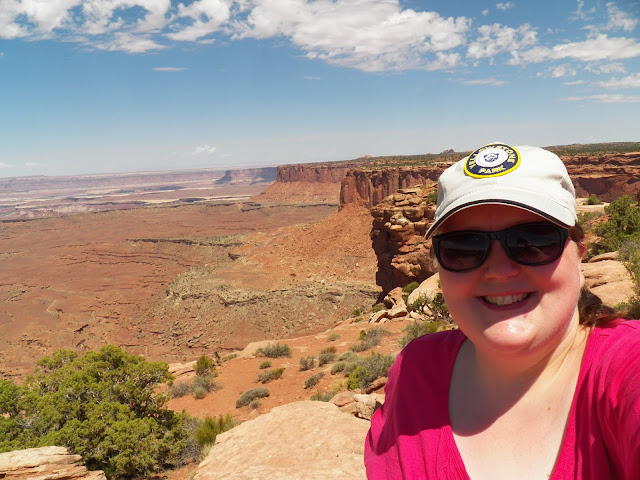I love mountains. When I was a kid, I thought I lived near some nice mountains. Then I went to Europe in college and stayed at a hotel on the summit of Mt. Pilatus in the Swiss Alps. Those were Mountains compared to what I had grown up with. But it wasn't until I drove through the Big Horn Mountains on my first cross-country trip that I really found out what mountains were. And now I am addicted to them. So Rocky Mountain National Park was a much-anticipated stop, which did not disappoint.
See? Mountains everywhere you look. It's like God took two-thirds of Colorado and crumpled it up like a piece of copy paper and then tried to smooth it back out again, only you can't really smooth paper back out; thus, the many ranges and peaks of the Colorado Rockies were formed.
Mountains so tall that nothing grows on top of them. Mountains that are, well, rocky.
And mountains that are covered with snow. Even in July.
Bear Lake was probably my favorite place in the park. I went later in the day, finishing up my short hike around the lake just before sunset, so it wasn't too crowded. The altitude kicked my butt a little, even though I had just slept at 8,000 feet in Yellowstone a few days before. I just love how the blues were so blue and the greens were so green, especially against the stark gray of the mountains. And how the mountains stand so proudly and resolutely above the rest of the world, like sentinels watching over humanity and nature.
RMNP also has some cool wildlife. Here's a Stellar's jay, which is so brilliantly blue and beautiful.
I also saw a TON of elk. At the top of Trail Ridge Road, which runs over the mountains at a top elevation of around 12,000 feet, I saw about ten bull elk grazing in a field.
This guy was my favorite, even though he wouldn't pick his head up for me.
Up at the Alpine Visitor Center on Trail Ridge Road, a huge herd of mamas and babies congregated.
On the other side of the mountains, I saw several moose grazing along the banks of the teeny, tiny Colorado River, more like a stream at this early stage of its journey.
Another thing I was really looking forward to was seeing tons of wildflowers. I didn't see tons, but the ones I did encounter embodied everything I love about wildflowers; they were sweet, colorful, delicate yet hardy, bringing a mini-party to the harsh mountaintop.

I definitely plan to return to RMNP one day, hopefully earlier in the season so I can see even more flowers. And one day I'd like to come in the fall to hear the elk bugling. It's really a beautiful place.




























